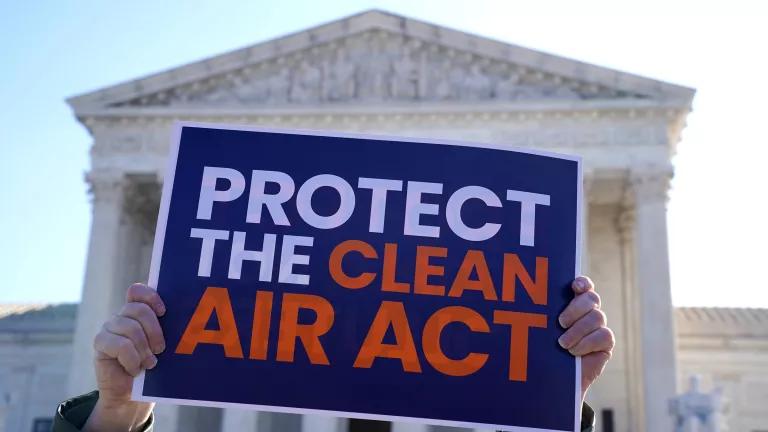Up in Smoke: Oregon Wildfires Cost Billions in Health Harms
New research sheds light on the health costs of climate change.

The 2015 Canyon Creek fire burned more than 600,000 acres in Oregon (Credit: Oregon Department of Forestry).
As the dangers of the climate crisis become increasingly clear, calls for urgent action are forcing the issue to the top of the policy agenda across U.S. states, including in Oregon. Now, new research sheds light on the significant health problems and associated costs caused by a range of climate-fueled events, including wildfires, in 11 states around the country. Applying those research methods to an additional state, Oregon, we estimate that wildfire smoke caused hundreds of premature deaths and more than $2 billion in health costs in 2012. Because climate change is fueling more damaging wildfires, these costs are poised to rise in the future if we fail to urgently respond to our climate problem.
Climate Change Fuels Dangerous Wildfires
Climate change threatens to worsen wildfires because higher temperatures, changes in seasonal rainfall patterns, and lower soil moisture promote more wildfires and longer fire seasons in the western United States. This year, parts of western Oregon and Washington, and states in the southeast and southwest, are experiencing moderate to abnormally high drought conditions. In the western United States, forest wildfire frequency and size and the wildfire season duration have increased significantly since the 1970s. The costs of fighting wildfires in Oregon hit a record high of $514 million in 2018, but that price tag does not include the major, and sometimes irreversible, health impacts and costs caused by these fires.
The Huge Health Costs of Climate-Fueled Events
Our team, working with an expert economist at the University of California-San Francisco, recently published a peer-reviewed analysis in the journal GeoHealth that illuminates the health and economic burdens of climate-sensitive events (including wildfires) in the U.S. We analyzed health costs for a sample of events that all occurred in 2012, focusing on exposures that are expected to worsen, to varying degrees, due to climate change. In that analysis, we identified $10 billion dollars in health costs for just a sample of events. Of those costs, a significant share was caused by wildfires. That’s because wildfires pose numerous threats to public health, including to people directly in harm’s way and those exposed to toxic air pollution in areas far downwind from burned areas. Wildfire smoke is a major source of several dangerous air pollutants that damage our health, including particulate matter (PM2.5), ozone (smog) precursors, and carbon monoxide. Many epidemiologic studies have documented adverse population health effects from smoke exposures, especially for heart and lung disease.
Wildfire smoke is an underappreciated danger. An earlier NRDC study found that in 2011, the area affected by wildfire smoke in the United States was nearly 50 times larger than the areas burned directly by fires. That year, an estimated two-thirds of the Americans, or nearly 212 million people (including about 480,000 in Oregon), lived in counties affected by wildfire smoke conditions. For our GeoHealth study, we highlighted wildfire impacts in Washington and Colorado. We know, however, that wildfires are wreaking havoc on public health across many additional states—one reason that the U.S. Environmental Protection Agency just released an updated wildfire smoke guide for public health officials across the country.
Fires Cause Billions in Damages to Health
To further illuminate the scope of this problem beyond the 11 states we examined in the GeoHealth study, we ran the numbers on the health impacts of wildfire smoke in 2012 in Oregon, another fire-prone state. During that year, an estimated 963 wildland fires burned more than 1.2 million acres in Oregon, according to the National Interagency Fire Center—about 13% of the total national acreage that wildfires burned that year. To come up with these health impact and health-related cost estimates for Oregon, we analyzed state-level data from a cutting-edge study estimating wildfire smoke-attributable air pollution impacts across the United States. In that study, air quality and health researchers, led by scientists at the U.S. Environmental Protection Agency, combined wildfire smoke exposure estimates with the best available public health science to estimate the annual health effects of smoke exposures (early deaths, and hospital admissions for respiratory and cardiovascular diseases).
The data for wildfire smoke impacts in Oregon is startling: we estimate that in 2012, wildfire smoke in the state caused 226 premature deaths. Beyond that estimated death toll, wildfire smoke triggered an estimated 1,986 emergency room visits and 92 hospital admissions for lung and heart ailments. Using the same health cost valuation methods as we applied in our new GeoHealth study, the health damages linked to 2012 wildfire smoke in Oregon totaled $2.1 billion (2018 dollars). That total includes the costs of lost lives, medical care in emergency rooms and hospitals, prescribed medications, and lost wages. Given the links between climate change and wildfire risks, these estimates signal billions more in health costs from wildfires in Oregon in recent years (including 2017’s devastating Eagle Creek fire)—costs that are largely neglected in public understanding of the economic impacts of wildfires.
Our GeoHealth study also identified disproportionate health risks for Medicare and Medicaid patients from climate change. That finding aligns with our understanding that older adults and the economically disadvantaged are among those most vulnerable to the health effects of climate-sensitive events. People especially sensitive to PM2.5 and other wildfire-generated air pollution exposures include children, the elderly, pregnant women, people with pre-existing cardiopulmonary disease, the economically disadvantaged, and those with pre-existing chronic inflammatory conditions like diabetes and obesity. There are other health problems caused by wildfires that we lack sufficient data for, including effects on mental health.
Preparing for Climate-Linked Health Challenges
Beyond wildfires, climate change poses numerous other serious risks to our health, and states like Oregon are taking proactive steps to protect their residents in the face of these mounting risks. The state is engaged actively in climate change adaptation planning, as Oregon’s Health Authority (OHA) collaborates with five local health departments—Benton, Crook, Jackson, and Multnomah Counties, and the North Central Public Health District—to develop local climate and health adaptation plans. OHA also runs the state’s Environmental Public Health Tracking program, part of a Centers for Disease Control and Prevention (CDC)-funded national effort to track environmental health risks and trends. That surveillance is key for understanding wildfire-related health problems like heart attacks, asthma, and chronic obstructive pulmonary disease (COPD). The state is also participates in the CDC Climate Ready Cities and States Initiative (through its Climate and Health Program) and is leading work to study, prevent, and plan for the health effects and costs of climate change.
Increased federal funding for these key programs can support expanded, coordinated tracking and monitoring of climate-sensitive health outcomes and environmental indicators related to climate change. It’s clear that we need a more coordinated federal effort to better track the health and economic impacts of climate change.
As these health and cost estimates reveal, the health impacts of wildfires are not limited to burned areas; deadly wildfire smoke can travel miles downwind and harm millions more people. As we improve our understanding of the individual and societal toll of wildfires and other climate-sensitive health risks, it’s clearer than ever that ambitious actions to slow global climate change will save lives and dollars. And while we push for stronger actions to reduce climate-changing pollution, we’ve also got to prepare communities for the many health risks that fires impose on residents in Oregon and across the country.
For more on our work to illuminate the high health costs of climate change, see the resources on this page.



